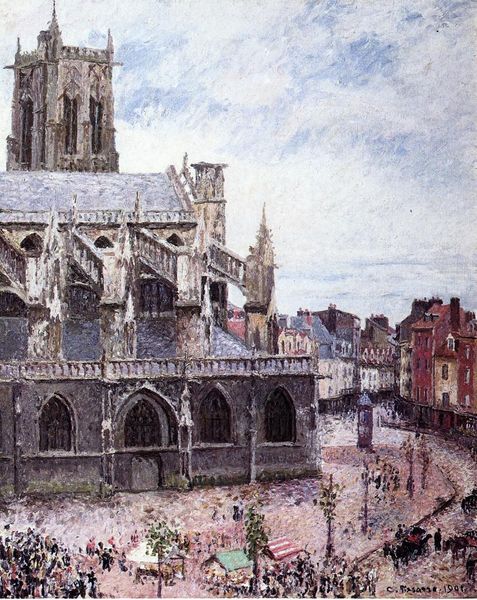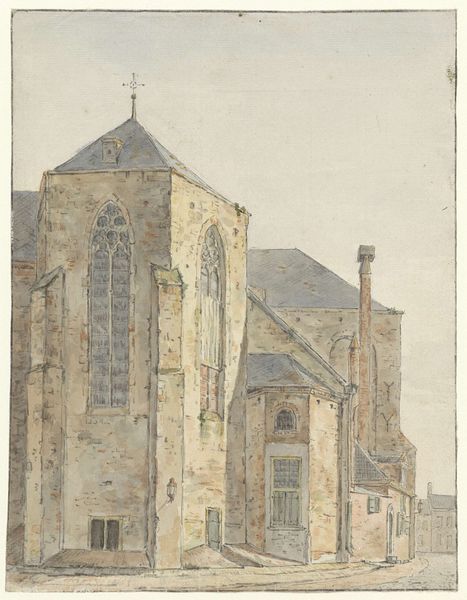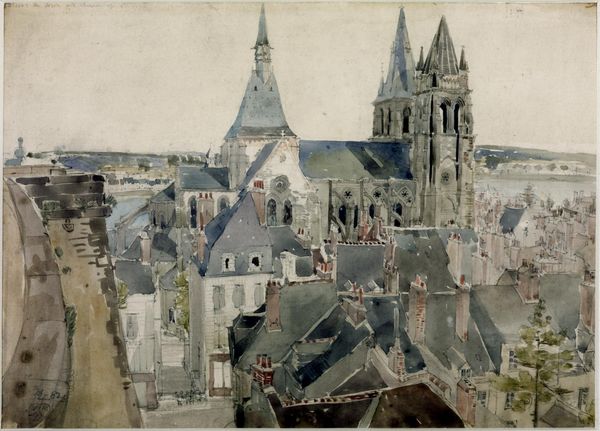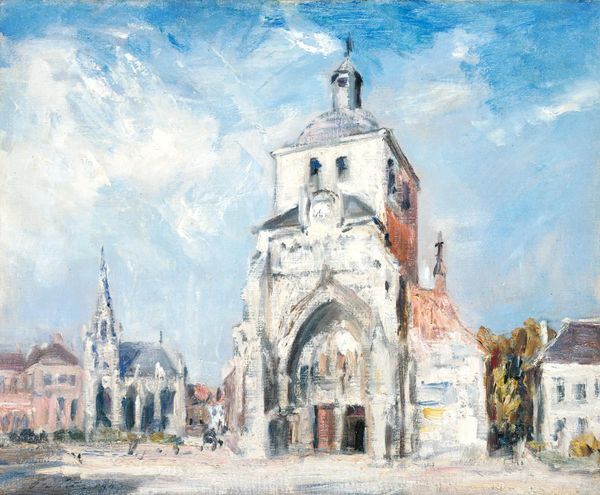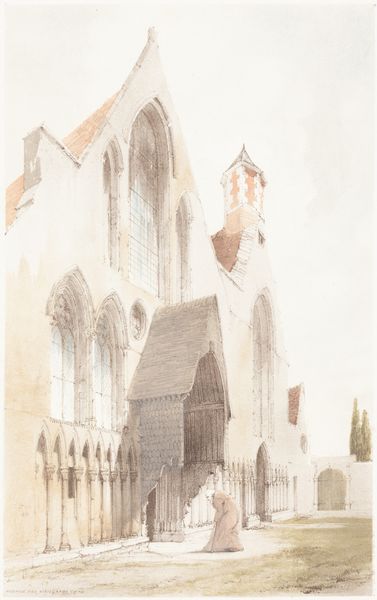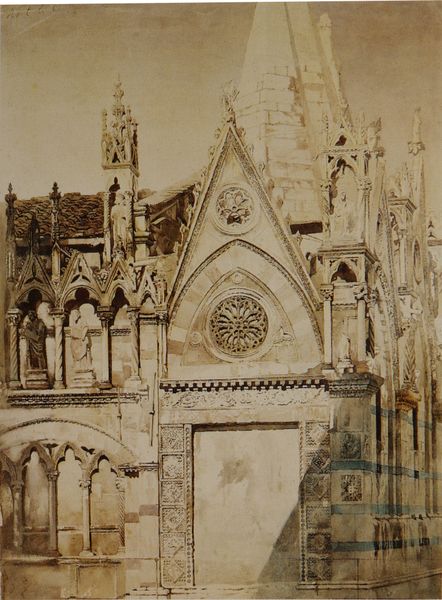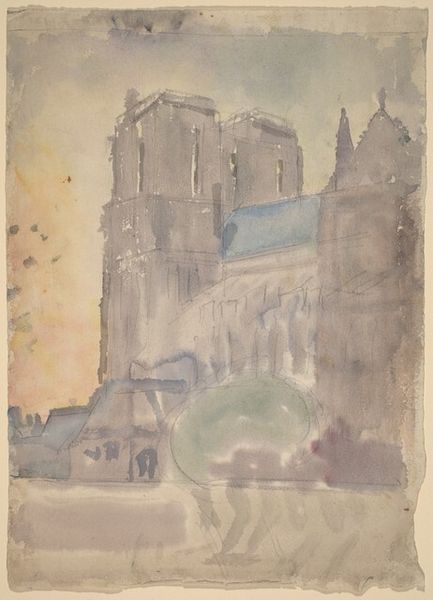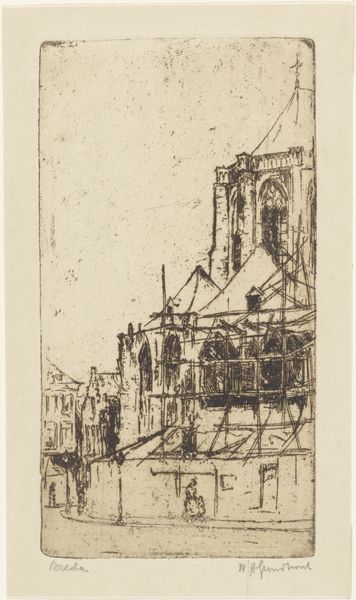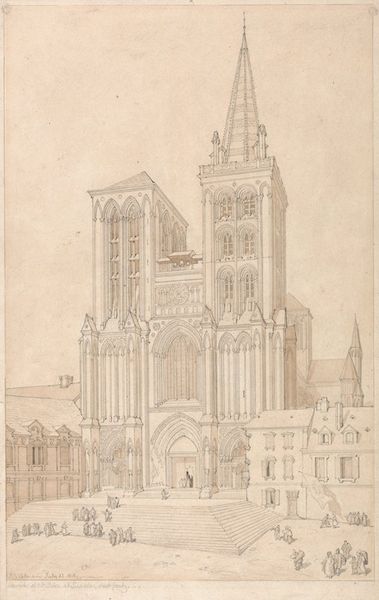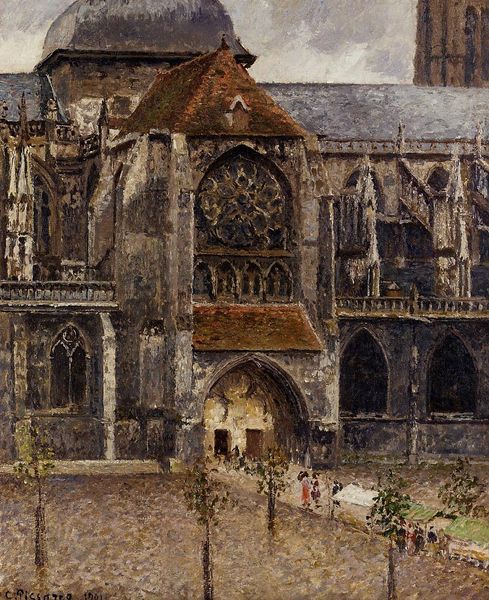
Copyright: Public domain
Curator: John Ruskin's watercolor, Abbeville Church of St Wulfran, painted in 1868, captures a detailed architectural portrait along the Somme. Editor: Immediately, I’m struck by the painting’s muted palette; it exudes a somewhat melancholic feeling, doesn’t it? Like a forgotten memory surfacing through the fog of time. Curator: Indeed. Ruskin’s technical precision is striking; the architectural details are rendered with almost photographic accuracy, and the way he’s used the layering of washes of watercolors to describe the textures of the stone, creating depth, particularly in the Gothic façade of the church itself is rather remarkable. Editor: Absolutely. And the fact that Ruskin made the painting *en plein air*—outdoors, onsite—really infuses the artwork with immediacy and sincerity. But for me, it evokes the broader sociopolitical and artistic currents of that time; in a world undergoing rapid industrialization, paintings such as these became vehicles of nostalgia. The grandeur of Gothic cathedrals also speaks of spiritual aspirations in an era increasingly dominated by materialism and scientific rationalism. It also fits squarely within Ruskin’s own social critique regarding the plight of the working class under the throes of industrial capitalism. Curator: I find the asymmetrical composition particularly engaging. The placement of the church relative to the canal in the lower right contributes a lot to its formal success. What is compelling, as well, is how Ruskin used color so deliberately to create contrasts—note the dark roof, that’s nearly a monochromatic grey, working against the sky above—and how he renders the surfaces visible along the façade and then extends his use of cool blue-grey down toward the water—that unifies the elements in this pictorial landscape, I think. Editor: Perhaps, but I think that Ruskin’s landscapes serve to show how humanity intersects, engages, or is sometimes confronted and consumed by nature, reflecting tensions between progress, tradition, faith, and doubt within a rapidly modernizing society, as reflected in these Romantic works of art. Curator: A point well taken. Editor: Precisely, this painting reminds me of the era’s urgent need for a collective historical memory—which paintings can accomplish. Curator: For me, I'm more intrigued by the delicate balance and precision of form. Editor: Yes, each vantage point tells a unique story, and no single voice captures all of its layers.
Comments
No comments
Be the first to comment and join the conversation on the ultimate creative platform.
